We remove the clutch discs for replacement, as well as when repairing engine components
We prepare the car and install it on a lift or a viewing ditch
Remove the manual transmission
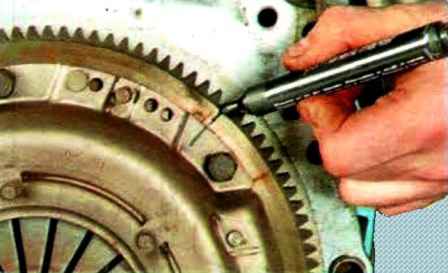
If the clutch discs cannot be replaced, then we mark the casing and flywheel with a marker to set the basket in the same position (to maintain balance)
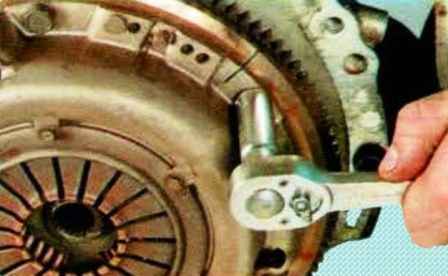
We unscrew the six bolts securing the pressure plate casing, holding the flywheel from turning with a mounting blade
Loosen the bolts evenly, two turns of the wrench
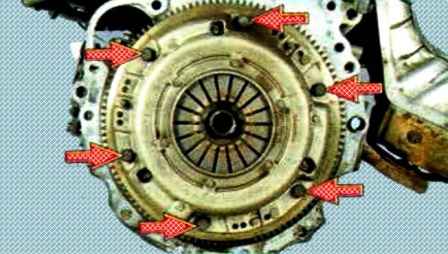
On a car equipped with a gasoline engine, the clutch pressure plate is attached to the flywheel with six bolts
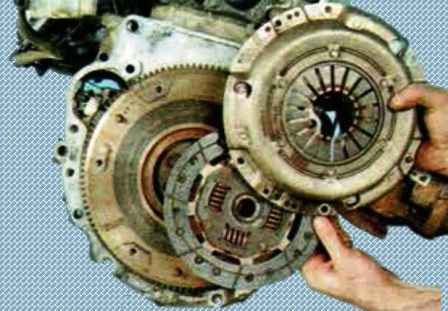
Remove the pressure and driven disc from the flywheel

Inspecting the clutch disc
Cracks on the parts of the driven disk are not allowed
Checking the degree of wear of the friction linings
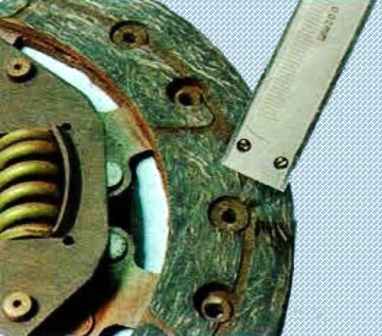
If the rivet heads are sunk by less than 0.3 mm, the surface of the friction linings is oily, or the rivet connections are loose, then the driven disk must be replaced
If the lining of the driven disk is oily, then the cause may be wear of the gearbox input shaft seal
In this case, the oil seal needs to be replaced

We check the reliability of fixing the damper springs in the sockets of the hub of the driven disk, trying to move them in the sockets of the hub by hand
If the springs move easily in their sockets or are broken, the disc needs to be replaced
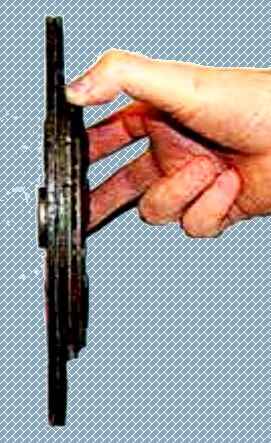
Check the runout of the driven disk, if its warping is detected during visual inspection
If the runout is greater than 0.5 mm, replace the disc

We examine the working friction surfaces of the flywheel and pressure plate, paying attention to the absence of deep scratches, scuffs, nicks, obvious signs of wear and overheating
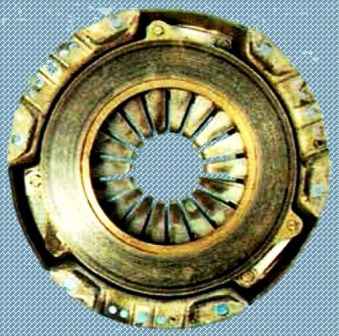
If the rivet connections of the casing and pressure plate parts are loose, replace the assembled discs
Assessing the condition of the diaphragm spring of the pressure plate
Cracks on the diaphragm spring are not allowed
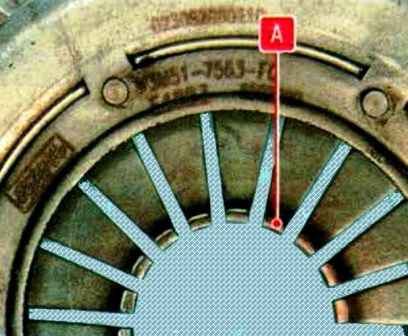
The places (A) of contact between the spring petals and the release bearing should be in the same plane and not have obvious signs of wear (wear should be no more than 0.8 mm)

We examine the connecting links of the casing and the disk. If the links are deformed or broken, replace the disc
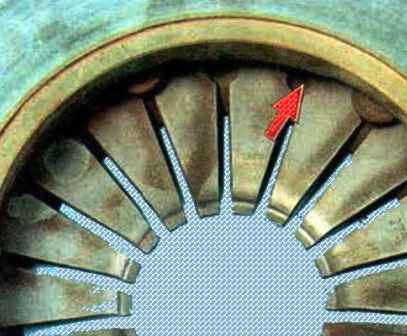
Assessing the condition of the pressure spring support rings on the outer and inner sides
Rings must be free of cracks and signs of wear
Before installing the clutch, we check the ease of movement of the driven disk along the splines of the input shaft of the gearbox
If necessary, we eliminate the causes of jamming or replace defective parts
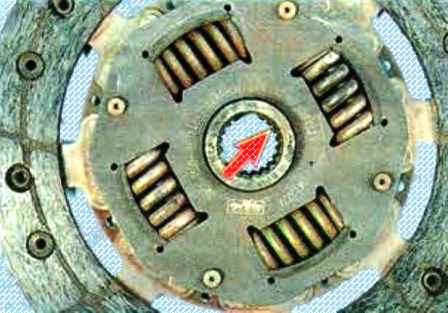
We apply refractory grease to the splines of the driven disk hub
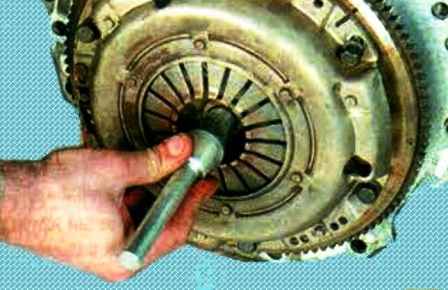
When mounting the clutch, first install the driven disk using a mandrel, and then the pressure plate casing, aligning the marks applied before removing it

And screw the bolts securing the casing to the flywheel
Install the driven disc so that the protruding part of the disc hub is directed towards the diaphragm spring of the clutch housing

We screw the bolts evenly, one turn of the key each, in the order shown in the photo
Tightening torque of the bolts 18.5-25.5 Nm
Remove the mandrel and install the gearbox
Checking the operation of the clutch





